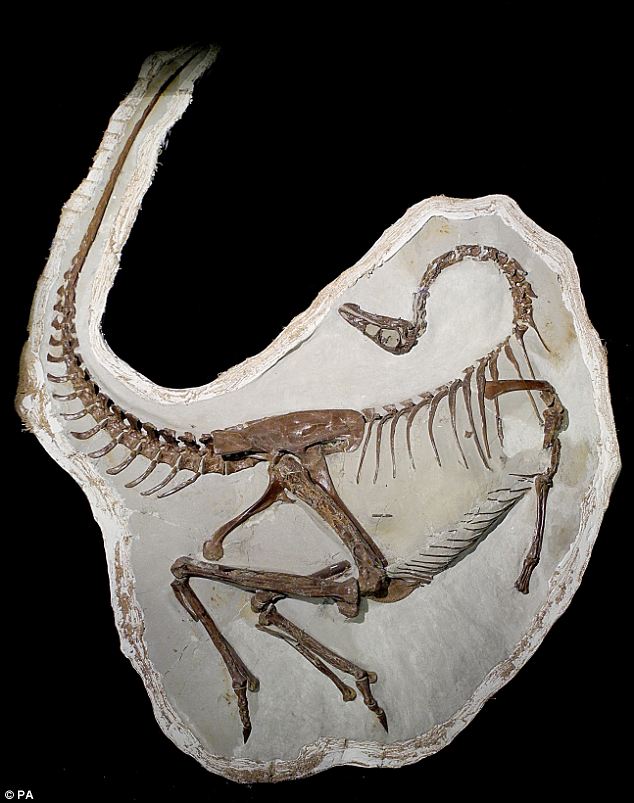Paleontologists from the University of Alberta have unearthed an amazing ~ 75 million-year-old fossil of an ostrich-like dinosaur known as Ornithomimus.

Reconstruction of Ornithomimus showing a plumage pattern that is consistent with previously described feathered specimens from Alberta, as well as with modern ratite birds, collectively suggesting a thermoregulatory role in all cases. Image credit: Julius Csotonyi.
The partial skeleton of Ornithomimus sp. was discovered in the Dinosaur Park Formation in Alberta, Canada, in 2009.
It is remarkable in the extent and quality of preservation of integumentary structures including feathers, according to a study published in the journal Cretaceous Research on October 28, 2015.

This new specimen – the only third known feathered Ornithomimus specimen – is shedding light on the dinosaur’s evolutionary adaptation to different environments.
“We are getting the newest information on what these dinosaurs may have looked like, how they maintained body temperatures, and the stages of feather evolution,” said Aaron van der Reest, a student at the University of Alberta and lead author on the study.
“The plumage pattern in Ornithomimus is similar to that of Struthio camelus (ostrich) and other large palaeognaths, indicating a probable function in thermoregulation,” the scientists said.
“We now know what the plumage looked like on the tail, and that from the mid-femur down, it had bare skin,” van der Reest said.

Full view of partial skeleton of the Cretaceous dinosaur Ornithomimus sp. Image credit: Aaron J. van der Reest et al.
“This is the first report of such preserved skin forming a web from the femoral shaft to the abdomen, never before seen in non-avian dinosaurs.”
“Ostriches use bare skin to thermoregulate. Because the plumage on this specimen is virtually identical to that of an ostrich, we can infer that Ornithomimus was likely doing the same thing, using feathered regions on their body to maintain body temperature. It would’ve looked a lot like an ostrich,” van der Reest said.

In fact, this group of dinosaurs – known as ornithomimids – is commonly referred to as ‘ostrich mimics.’
“This specimen also tightens the linkages between dinosaurs and birds, in particular with respect to theropods,” said co-author Dr Alexander Wolfe, of the University of Alberta’s Department of Biological Sciences.
“There are so many components of the morphology of this fossil as well as the chemistry of the feathers that are essentially indistinguishable from modern birds.”
Source: sci.news







